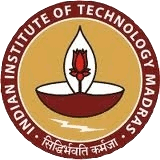Team:IIT Madras/Background
From 2013.igem.org
Background
Introduction
Shiga toxin is produced by Shigella dysenteriae and a few strains of E. coli collectively called STEC (Shiga toxin-producing Escherichia coli), mainly comprising of strains like O157:H7, O111 and O26. Shiga toxin has a molecular weight of about 70 kDa. Shiga toxin is an AB5 type toxin; a multi-subunit protein made up of one molecule of an A subunit (32 kDa molecular weight) responsible for the toxic action of the protein, and five molecules of the B subunit (7.7 kDa molecular weight) responsible for binding to a specific cell type. It is a very deadly toxin with an LD50 value of <20 ug/kg by intravenous or intraperitoneal administration. The toxin is produced after the bacteria colonize the cattle GI tract and form a biofilm. Shiga toxicity results in complications like bloody diarrhoea, abdominal cramping fever etc. in initial stages but may lead to deadly diseases like hemorrhagic colitis, Hemolytic Uremic Syndrome and kidney failure, as observed in upto 10% of the cases.
STEC and hence shiga toxin is transmitted primarily through unprocessed meat, raw milk etc., and can also be transmitted through contaminated food and water through fecal-oral route. Having claimed over 1 million lives worldwide, there is no comprehensive cure for the ailment at present. Supportive care requires maintenance of fluid and electrolyte levels, and monitoring and support of kidney function.

Statistics
- Shiga toxin has claimed the lives of more than 1 million people worldwide. More than 150 million people each year are affected by the toxin directly, or indirectly. Shiga toxin has claimed the lives of more than 1 million people worldwide. More than 150 million people each year are affected by the toxin directly, or indirectly.
- In 2011 alone, more than 3,700 people were infected and 45 died, in Germany and Western Europe.
- Shiga toxin induced kidney damage, is the major cause of acute pediatric renal failure, and 30% of survivors experience permanent kidney damage.
Transmission
STEC and hence shiga toxin is transmitted primarily through unprocessed meat, raw milk etc., and can also be transmitted through contaminated food and water through fecal-oral route. Having claimed over 1 million lives worldwide, there is no comprehensive cure for the ailment at present. Supportive care requires maintenance of fluid and electrolyte levels, and monitoring and support of kidney function.
Biofilm Formation
AHL (N-acylhomoserine lactone) in rumen plays a critical role in establishment of the biofilm and is observed to directly correlate with biofilm formation. The O157:H7 E. coli strain and other STEC strains are infested through food and water and colonizes the lower GI tract of the cattle enroute to which it first encounters rumen, which is abundant in AHL. AHL activates SdiA signalling which represses LEE genes required for attachment, hence inhibiting them from attaching to rumen. At the same time, it activates the acid-resistant operon (GAD) which is required for the bacteria to survive (in acidic conditions) in the rumen. This facilitates the downstream colonization of the bacteria in the GI tract where AHL is absent and thereby the LEE genes can be expressed efficiently for attachment. These pathogenic biofilms have been associated with unrelenting infections due to their high resistance to antimicrobial agents.

Mechanism of action
The toxin is endocytosed after the B subunit of the toxin binds to the Gb3 receptor on vascular endothelial cells, following which the A subunit is released in the cytosol via the retrograde pathway. Here it acts as an N-glycosidase, cleaving a specific adenine nucleobase from the 28S RNA of the 60S subunit of the ribosome, thereby inhibiting protein synthesis in the target cells leading to cell death and hemorrhage. This event at a systemic scale leads to kidney failure and may even result in deadly HUS.
 "
"


